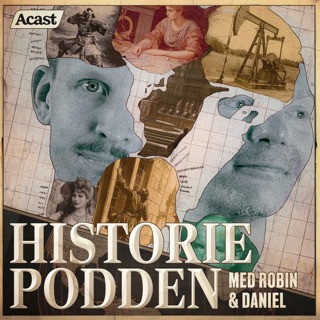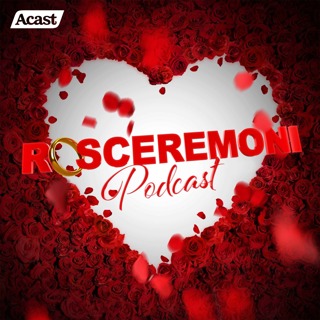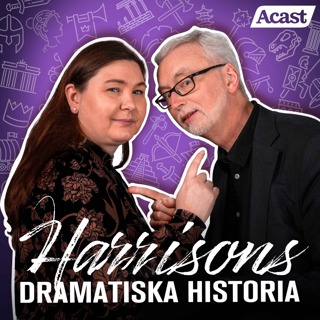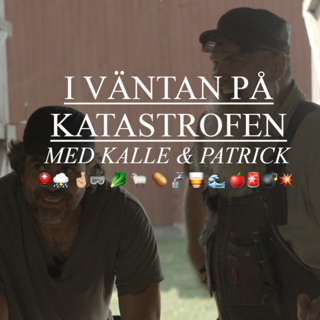
Episode 30 - Prompting
Subscribe on Apple Podcasts Subscribe on Google Play Subscribe on Stitcher Welcome to prompting Thunderdome where only one type of prompting can survive! Will it be the classic most-to-least prompt? The odd-sounding "no-no" prompt? Maybe least-to-most prompting will take the top prize. All we can say is, you won't believe who wins it all! Plus, the secrets of Diana's birthday present, hot takes on prompts Rob hates, and the most famous Duplo constructs this side of the Mississippi. Prompting research is the ::expectant look:: Articles discussed this episode: Libby, M.E., Weiss, J.S., Bancroft, S., & Ahearn, W.H. (2008). A comparison of most-to-least and least-to-most prompting on the acquisitio of solitary play skills. Behavior Analysis in Practice, 1, 37-43. Leaf, J.B., Sheldon, J.B., & Sherman, J.A. (2010). Comparison of simultaneous prompting and no-no prompting in two-choice discrimination learning with children with autism. Journal of Applied Behavior Analysis, 43, 215-228. doi: 10.1901/jaba.2010.43-215 If you're interested in ordering CEs for listening to this episode, click here to go to the store page. You'll need to enter your name, BCBA #, and the two episode secret code words to complete the purchase. Email us at abainsidetrack@gmail.com for further assistance.
10 Maj 20171h 7min

Episode 30 Preview
Subscribe on Apple Podcasts Subscribe on Google Play Subscribe on Stitcher Subscribe on YouTube Let's get ready for prompting with this week's new preview episode. Ever wonder what the best prompts around are? We get the discussion going with a comparison of most-to-least, least-to-most, simultaneous, and no-no prompts. But before the big discussion next week, Diana stops to finally give us all our gifts from APBA and to share some excellent listener emails. Then we discuss Julia, the new Muppet with autism on Sesame Street. Finally, other nonsense ensues, probably something with Jackie and terrible TV shows. Articles for next week: Libby, M.E., Weiss, J.S., Bancroft, S., & Ahearn, W.H. (2008). A comparison of most-to-least and least-to-most prompting on the acquisitio of solitary play skills. Behavior Analysis in Practice, 1, 37-43. Leaf, J.B., Sheldon, J.B., & Sherman, J.A. (2010). Comparison of simultaneous prompting and no-no prompting in two-choice discrimination learning with children with autism. Journal of Applied Behavior Analysis, 43, 215-228. doi: 10.1901/jaba.2010.43-215
3 Maj 201716min

Episode 29 - It's Not Easy Being Green
Subscribe on iTunes Subscribe on Google Play Subscribe on Stitcher Hey hey hey! ::cow mooing sound effect:: It's J-Dog, Dr. D, and the Rob-meister, comin' at ya with an all new episode of ABA Inside Track. This week the zoo crew is trying to use behavior analysis to go green. Our street team will be handing out rulers to all the campers at the state park picking up trash. And, at the top of the hour, we'll prank local university students by hiding all the recycle bins to see how much trash we can get them to generate. ::WAHOOGA:: Finally, one lucky winner is going to take home the top prize for conserving the most gas! ::fart noises:: Then, coming up after the show, a roundtable discussion of issues related to conservation and how ABA can provide meaningful solutions to ecological crises. But right now, back to our hilarious antics...This ain't your mom's podcast about behavior analysis, boy-ee! Articles discussed this episode: Clark, R.N., Burgess, R.L., & Hendee, J.C. (1972). The development of anti-litter behavior in a forest campground. Journal of Applied Behavior Analysis, 5, 1-5. doi: 10.1901/jaba.1972.5-1 Foxx, R.M. & Schaeffer, M.H. (1981). A company-based lottery to reduce the personal driving of employees. Journal of Applied Behavior Analysis, 14, 273-285. doi: 10.1901/jaba.1981.14-273 Miller, N.D., Meindl, J.N., & Caradine, M. (2016). The effects of bin proximity and visual prompts on recycling in a university building. Behavior and Social Issues, 25, 4-10. doi: 10.5210/bsi.v.25i0.6141 Chance, P. & Heward, W.L. (2010). Climate change: Meeting the challenge. The Behavior Analyst, 33, 197-206. If you're interested in ordering CEs for listening to this episode, click here to go to the store page. You'll need to enter your name, BCBA #, and the two episode secret code words to complete the purchase. Email us at abainsidetrack@gmail.com for further assistance.
26 Apr 20171h 17min

Episode 29 Preview
Subscribe on iTunes Subscribe on Google Play Subscribe on Stitcher Subscribe on YouTube In honor of Earth Day, we're delving into how behavior analysis can help solve issues related to sustainability. And while recording by candlelight might save electricity, it will take more than that to promote lasting green change. But, before we get into the research, Rob stops the show cold by declaring himself the Scrooge of environmental causes requires counteracting by sharing positive vibes with some listener mail and the Reading Rainbow song. It's not ABA Inside Track without a musical number. Articles for next week: Clark, R.N., Burgess, R.L., & Hendee, J.C. (1972). The development of anti-litter behavior in a forest campground. Journal of Applied Behavior Analysis, 5, 1-5. doi: 10.1901/jaba.1972.5-1 Foxx, R.M. & Schaeffer, M.H. (1981). A company-based lottery to reduce the personal driving of employees. Journal of Applied Behavior Analysis, 14, 273-285. doi: 10.1901/jaba.1981.14-273 Miller, N.D., Meindl, J.N., & Caradine, M. (2016). The effects of bin proximity and visual prompts on recycling in a university building. Behavior and Social Issues, 25, 4-10. doi: 10.5210/bsi.v.25i0.6141 Chance, P. & Heward, W.L. (2010). Climate change: Meeting the challenge. The Behavior Analyst, 33, 197-206.
19 Apr 201715min

Episode 28 - FCT
Subscribe on iTunes Subscribe on Google Play Subscribe on Stitcher SPOILER WARNING! FCT is superior to many other treatments. If you want to know which treatments, you'll have to go 5 rounds with Diabolical Dr. D in the ring, suffer through Rob's snooty New England anecdotes, and share your favorite foods to eat while reading journal articles with Jackie. Only then will you have the joy of hearing a discussion about Carr and Durand and the epic Tale of FCR. And you won't even need to use an FCR response (or should that be FC response?) to witness the heartwarming return of the lag schedule. This podcast is like EZ tasks 100, folks! Articles discussed this episode: Carr, E.G. & Durand, V.M. (1985). Reducing behavior problems through functional communication training. Journal of Applied Behavior Analysis, 18, 111-126. doi: 10.1901/jaba.1985.18-111 Reeve, C.E. & Carr, E.G. (2000). Prevention of severe behavior problems in children with developmental disorders. Journal of Positive Behavior Interventions, 2, 144-160. doi: 10.11777/109830070000200303 Adami, S., Falcomata, T.S., Muething, C.S., & Hoffman, K. (2017). An evaluation of lag schedules of reinforcemetn during functional communication training: Effects of varied mand responding and challenging behavior. Behavior Analysis in Practice doi:10.1007/s40617-017-0179-7 If you're interested in ordering CEs for listening to this episode, click here to go to the store page. You'll need to enter your name, BCBA #, and the two episode secret code words to complete the purchase. Email us at abainsidetrack@gmail.com for further assistance.
12 Apr 20171h 10min

Episode 28 Preview
Subscribe on iTunes Subscribe on Google Play Subscribe on Stitcher Subscribe on YouTube Next week we'll be discussing some blast from the past articles related to functional communication training (FCT) as well as a revisit with our old friend lag schedules. But first, we thank our listeners from upstate New York and India for their Jackie-fandom and grow increasingly incensed at all those people trying to nip us in the "butt". Articles discussed next week: Carr, E.G. & Durand, V.M. (1985). Reducing behavior problems through functional communication training. Journal of Applied Behavior Analysis, 18, 111-126. doi: 10.1901/jaba.1985.18-111 Reeve, C.E. & Carr, E.G. (2000). Prevention of severe behavior problems in children with developmental disorders. Journal of Positive Behavior Interventions, 2, 144-160. doi: 10.11777/109830070000200303 Adami, S., Falcomata, T.S., Muething, C.S., & Hoffman, K. (2017). An evaluation of lag schedules of reinforcemetn during functional communication training: Effects of varied mand responding and challenging behavior. Behavior Analysis in Practice doi:10.1007/s40617-017-0179-7
5 Apr 201716min

Episode 27 - Stereotypy as Reinforcement
Subscribe on iTunes Subscribe on Google Play Subscribe on Stitcher Are you tired of using nothing but punishment procedures when treating stereotypy? Wishing you could use some form of reinforcement as a function-based treatment? Well, maybe you can as we discuss two research articles exploring stereotpy as reinforcement. And, for long-time listeners, we finally uncover what crazy images Rob thinks of when reading research articles. If you don't listen now, it's just going to be spoiled for you at work tomorrow. Articles discussed this episode: Potter, J.N., Hanley, G.P., Augustine, M., Clay, C.J., & Phelps, M.C. (2013). Treating stereotypy in adolescents diagnosed with autism by refining the tactic of "using stereotypy as reinforcement". Journal of Applied Behavior Analysis, 46, 407-423. doi: 10.1002/jaba.52 Slaton, J.D. & Hanley, G.P. (2016). Effects of multiple versus chained schedules on stereoypy and item engagement. Journal of Applied Behavior Analysis, 49, 927-946. doi: 10.1002/jaba.345 If you're interested in ordering CEs for listening to this episode, click here to go to the store page. You'll need to enter your name, BCBA #, and the two episode secret code words to complete the purchase. Email us at abainsidetrack@gmail.com for further assistance.
29 Mars 20171h 11min

Episode 27 Preview
Subscribe on iTunes Subscribe on Google Play Subscribe on Stitcher Subscribe on YouTube If stereotypy is so fun, why can't we use it as reinforcement? Well, there are a couple big reasons and we've got the articles that explain it all. But that's next week. In our preview episode this week, we head back down our ethical decision-tree with another chance to practice talking with non-behaviorist colleagues. And, in a shocking twist of fate, one of our hosts will be featured in the New England Behavior Analyst. It's a 33% chance of guessing which one, but a 100% chance for awesome podcast! Articles for next week: Potter, J.N., Hanley, G.P., Augustine, M., Clay, C.J., & Phelps, M.C. (2013). Treating stereotypy in adolescents diagnosed with autism by refining the tactic of "using stereotypy as reinforcement". Journal of Applied Behavior Analysis, 46, 407-423. doi: 10.1002/jaba.52 Slaton, J.D. & Hanley, G.P. (2016). Effects of multiple versus chained schedules on stereotypy and item engagement. Journal of Applied Behavior Analysis, 49, 927-946. doi: 10.1002/jaba.345
22 Mars 201734min





















